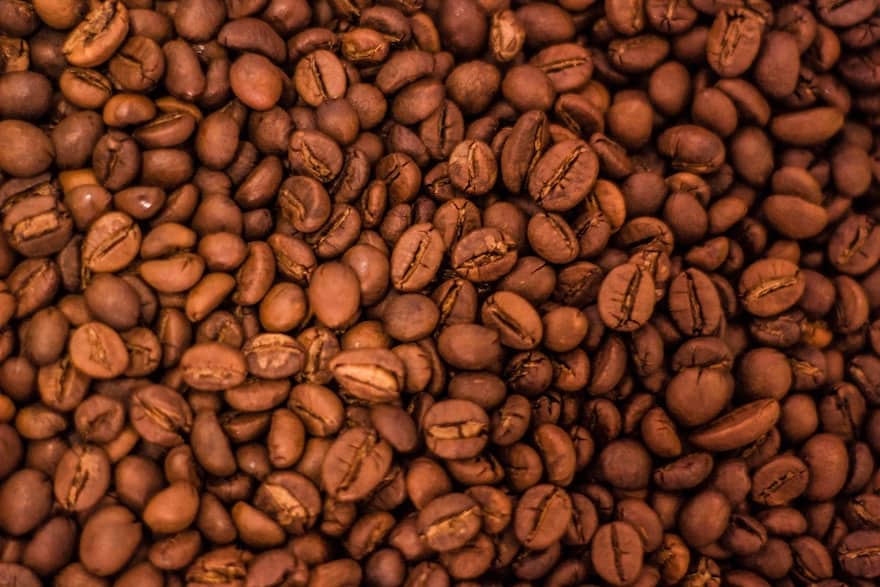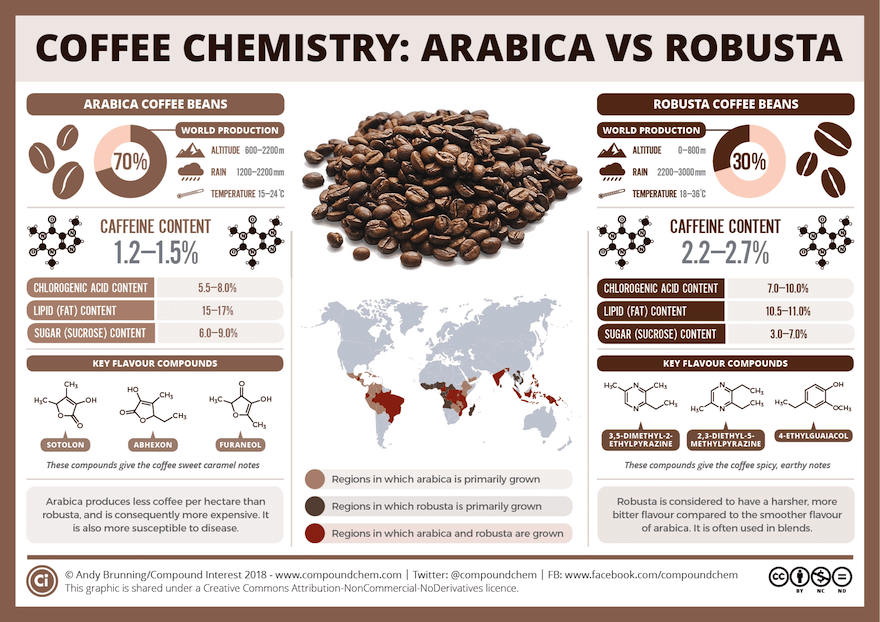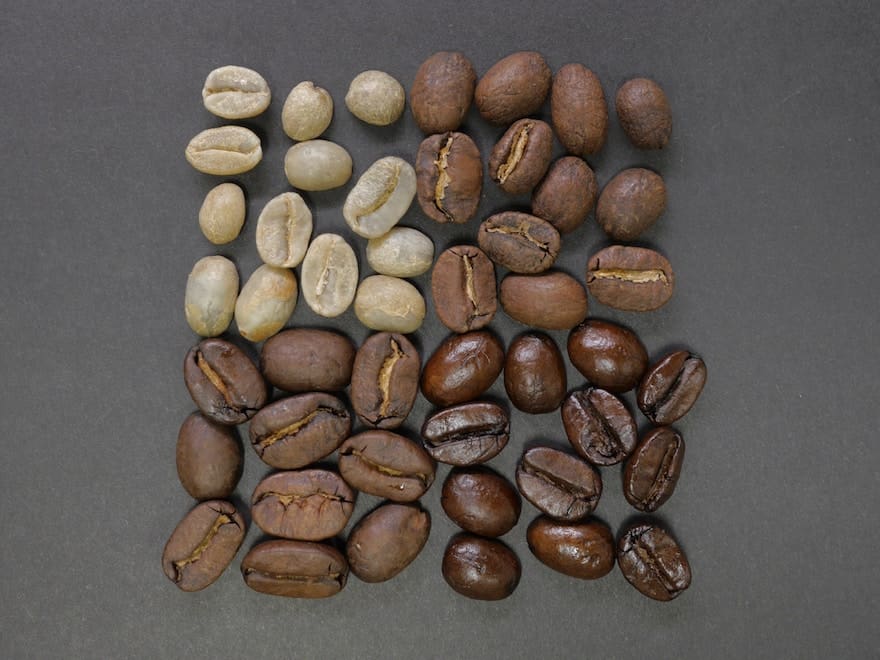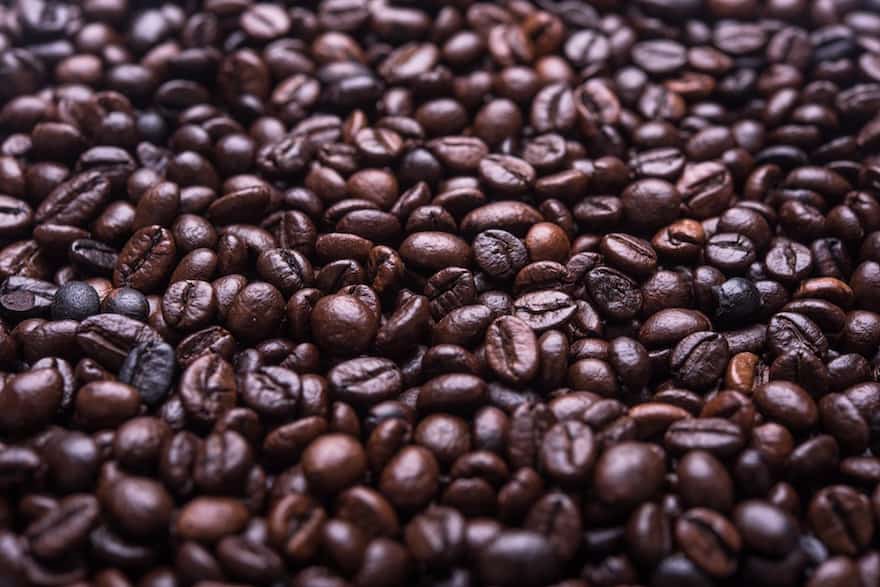Last Updated on December 8, 2023
If you’ve ever encountered oily coffee beans, you may have wondered why some have that shiny surface while others appear dry. What’s the story? And is it a feature or a bug?

Oily coffee beans result from lipids within the bean coming to the surface in the form of oil. This can happen during a long roast, or more gradually as beans are stored after roasting. A coat of oil on beans doesn’t necessarily indicate they are poor quality or too old, but it does suggest a few factors to investigate.
Coffee is a beverage of nuance, so the answer isn’t straightforward. You may hear conflicting assertions of “oily beans are fresh and well roasted” and “oily beans are old and stale.” To determine whether that oil is a good sign or a bad sign, you should first consider how thoroughly the beans were roasted. If you’re seeing oil on a light or medium roast, they’ve probably been stored a long time—perhaps without a proper container. If you’re seeing it on a dark roast, they could be quite fresh.

What’s Inside Coffee Beans
Hundreds of chemicals are responsible for the experience we have when drinking coffee. A bean is actually a seed, and its endosperm—the reproductive interior—is packed with carbohydrates, amino acids, water, caffeine, and lipids. Each of these reacts differently to heat during roasting and water during brewing.
The humble caffeine molecule, for example, is water-soluble and extracts quickly, but has an unpleasant taste on its own. Volatile compounds created by heating sugars and proteins produce rich aromas and flavours. Organic acids are responsible for most of the sour notes in coffee.
Lipids make up the oils in the coffee bean, whether locked deep inside or visible on the surface. These oils carry important flavour compounds and affect the mouthfeel of brewed coffee.

How Coffee Changes During Roasting
Coffee beans change dramatically during roasting. (Try roasting them yourself and you’ll see!) Water converts to steam, increasing the internal pressure, and the beans turn brown due to a heat-induced interaction of amino acids and sugars called the Maillard reaction. The cellulose structure of the beans eventually begins to break, leading to an audible snapping sound that roasters call “first crack.”
From there, sugars caramelize, and dominant flavours change from “origin” characteristics attributed to the bean’s unique variety and growing conditions, to “roast” characteristics. Many specialty roasters pull their beans from the heat around this point, depending on the balance they want to achieve. Keep roasting and deeper structures in the beans break down, leading to the milestone known as “second crack.” Heat compromises the endosperm and makes the outer shell more porous, driving coffee oils to the surface.

Since coffee oils contain flavour, does that mean greasy beans make tastier coffee? Not exactly. Those oils start inside the bean. For a few reasons, that’s where they should stay. Once on the surface, oils are exposed to oxygen. As they oxidize, they lose complexity and begin to take on less pleasant flavours. If a medium- or light-roasted coffee has oil on the surface, it’s probably been there a long time and will taste flat and stale. On the other hand, a very dark French or Italian roast could look oily right away. Expect the roast flavours to dominate the flavour profile of these beans, with savoury flavours of smoke or even charcoal.

Roast level is a matter of preference, but drinking fresh coffee will always give you a better cup. Next time shiny beans catch your eye, remember that more oil comes to the surface of the bean during longer roasting times, and longer storage times after roasting.
Let your eyes and nose guide you. While the glossy appearance of oily coffee beans isn’t a clear indicator of quality or age, it’s definitely a feature to steer clear of if you prefer a lighter roast, or if the beans aren’t very dark and no roast date is specified.



1 thought on “Oily Coffee Beans Aren’t Necessarily a Bad Sign”
Comments are closed.